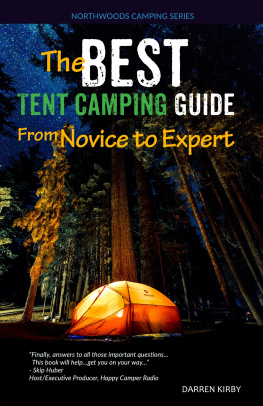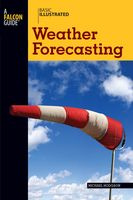About the Author
Cliff Jacobson is a professional canoe outfitter and guide, a wilderness canoeing and camping consultant, and the author of more than a dozen top-selling books on camping and canoeing. His video, The Forgotten Skills , details the most important campcraft procedures.
Cliffs unique methods are proven by the sweat of pack and paddle and are reminiscent of the days when skills were more important than things. Cliff has developed many popular educational materials that are widely used in schools. His Wilderness Meal activity, which teaches wilderness ethics (detailed in his book, Boundary Waters Canoe Camping ), has been called the most successful environmental activity of all time. Cliff also wrote the Minnesota State map and compass (orienteering) curriculum for Minnesota schools, and a popular water quality curriculum ( Water Water Everywhere , published by the HACH Co.) that is used nationwide.
Cliff is a retired eighth-grade environmental science teacher who now splits his time between canoeing and camping, and sharing his love for the sport by writing and teaching about it. When hes not writing, speaking, or leading canoe trips in northern Canada, hes out paddling his solo canoe or figuring out a new way to improve his equipment.
In 2003, the American Canoe Association presented Cliff with the Legends of Paddling award and inducted him into the ACA Hall of Fame.
BASIC ILLUSTRATED
Camping
FALCON GUIDES
An imprint of Rowman & Littlefield
Falcon, FalconGuides, and Outfit Your Mind are registered trademarks of Rowman & Littlefield.
Distributed by NATIONAL BOOK NETWORK
Copyright 2015 by Cliff Jacobson
All rights reserved. No part of this book may be reproduced in any form or by any electronic or mechanical means, including information storage and retrieval systems, without written permission from the publisher, except by a reviewer who may quote passages in a review.
Illustrations by Lon Levin
Photos by Cliff Jacobson unless otherwise noted.
British Library Cataloguing in Publication Information Available
Library of Congress Cataloging-in-Publication Data
Jacobson, Cliff.
Basic illustrated. Camping / Cliff Jacobson ; illustrations by Lon Levin. second edition
pages cm
Includes index.
ISBN 978-1-4930-1253-4 (pbk.) ISBN 978-1-4930-1915-1 (ebook) 1. Camping. I. Levin, Lon, ill. II. Title. III. Title: Camping.
GV191.7.J327 2015
796.54dc23
2015017364
 The paper used in this publication meets the minimum requirements of American National Standard for Information SciencesPermanence of Paper for Printed Library Materials, ANSI/NISO Z39.48-1992.
The paper used in this publication meets the minimum requirements of American National Standard for Information SciencesPermanence of Paper for Printed Library Materials, ANSI/NISO Z39.48-1992.
The author and Globe Pequot assume no liability for accidents happening to, or injuries sustained by, readers who engage in the activities described in this book.
Acknowledgments
A special thanks to Dr. Bill Forgey and Tom Todd, who at the start, believed in the idea of this book. To my editor, Katie Benoit Cardoso, who pressed for a revised edition. And to my friends Rob Kesselring (RobKesselring.com), David Morlock (morlockphotography.com), and Steve Piragis of Piragis Northwoods Company (piragis.com), for photos they graciously provided.
Introduction
I discovered the joys of camping at the age of twelve in a rustic Scout camp set deep in the Michigan woods. It was 1952, just before the dawn of nylon tents and 60/40 parkas. Aluminum canoes were hot off the Grumman forms, though Id never seen one. Deep down, I believed theyd never replace the glorious Old Towns and Thompsons.
Like most kids my age, I had little money for outdoor gear. What I earned by picking pop bottles off the roadway went for a secondhand bike or a Randolph Scott movie. My camping outfit was carefully assembled from a ragtag assortment of military surplus and Salvation Army store items. I knew only one kid who had equipment that was new. Once I saved enough to buy an official Boy Scout knife, which in those days came with good carbon steel blades and a metal BSA insignia.
One Christmas Dad gave me an all-steel Scout handaxe, which came complete with tooled leather sheath and varnished wood scales. For twenty years thereafter I proudly carried it on all my hiking and canoe trips. It was my edge for making fires on a rainy day. Early on, I decided that those who bad-mouthed hatchets simply lacked the skills to use them right. I still retain that conviction, as youll see in Chapter 2.
On my fourteenth birthday I received another treasured gifta solid brass M 71 Primus stove, which, at five dollars, was a genuinely expensive gift.
These items, along with an army surplus wool sleeping bag and poncho, comprised my store of camping items. Everything fit nicely into a tan canvas packsack and together tipped the scale at barely 20 pounds. To this, add a weeks worth of dehydrated Seidel trail foods, a handful of big stick matches, and a spartan change of clothes, and I was ready for the great adventure.
At last I owned all the tripping gear Id ever need. What boy could be more fortunate? Admittedly, I yearned for an army down-and-feathers sleeping bagthe wool one I had was adequate only in the heat of summer. But no matter: With an extra blanket and knitted sweater, I got by. Even in snow. After all, being a little cold was part of the camping game, wasnt it?
My bible on how to camp was the Boy Scout Handbook , which, I was told, contained absolutely everything one could want to know about the great outdoors. It was all therefrom how to trench a tent and build a bed of pine boughs to the construction of rope-lashed furniture and emergency dwellings. Axmanship was serious stuff, so it was treated as a separate chapter.
Environmental concerns? There were none. Not that we didnt care, you understand. We just didnt see anything wrong with cutting trees and restructuring the soil to suit our needs. Given the equipment of the day, reshaping the land was the most logical way to make outdoor life bearable.
Litter, of course, was another matter. We proudly packed out everything we (and anyone else) brought in. We were Boy Scouts, not slobs!
In 1958 Calvin Rutstrum brought out his first book, The Way of the Wilderness . Suddenly, there was new philosophy afield. Calvin knew the days of trenched tents and bough beds were numbered. His writings challenged readers to think before they cut, to use an air mattress instead of a spruce bed. Wilderness camping was in proud transition. New productsnylon, Dacron, stainless steel, and vinylwere already fragmenting the monopolies enjoyed by cotton, wool, and canvas. Outfitters by the thousands sold (or burned) their cotton tents and joined the nylon revolution.
Suddenly the emphasis had shifted from skills to things. Knowing how was no longer good enough. Everyone needed a plethora of new geardown sleeping bags and foam sleeping pads; Swiss Army knives with a tool for everything; waterproof boots with Vibram lugs; two-piece rain suits with clever hoods that moved with the turn of a head; polypropylene socks and underwear and fleece pullovers; Erector-set tents that needed no staking; Gore-Tex suits that breathed in the rain; color-matched designer clothes that looked good at the All-Stars game; and tiny trail stoves that ran on canisters of liquid butane.
Suddenly I felt quite inadequate, like a peasant in Camelot.
Calvin Rutstrum summed it up one foggy morning on a mid-September day. Id driven up to meet him at his wilderness cabin on the North shore of Lake Superior. Cal had built the place himself, every inch of it. No need to pour a concrete slab; a mirror-flat shelf of slate was good enough. The double cabin was artfully constructed from native pine. And it was solid!





 The paper used in this publication meets the minimum requirements of American National Standard for Information SciencesPermanence of Paper for Printed Library Materials, ANSI/NISO Z39.48-1992.
The paper used in this publication meets the minimum requirements of American National Standard for Information SciencesPermanence of Paper for Printed Library Materials, ANSI/NISO Z39.48-1992.